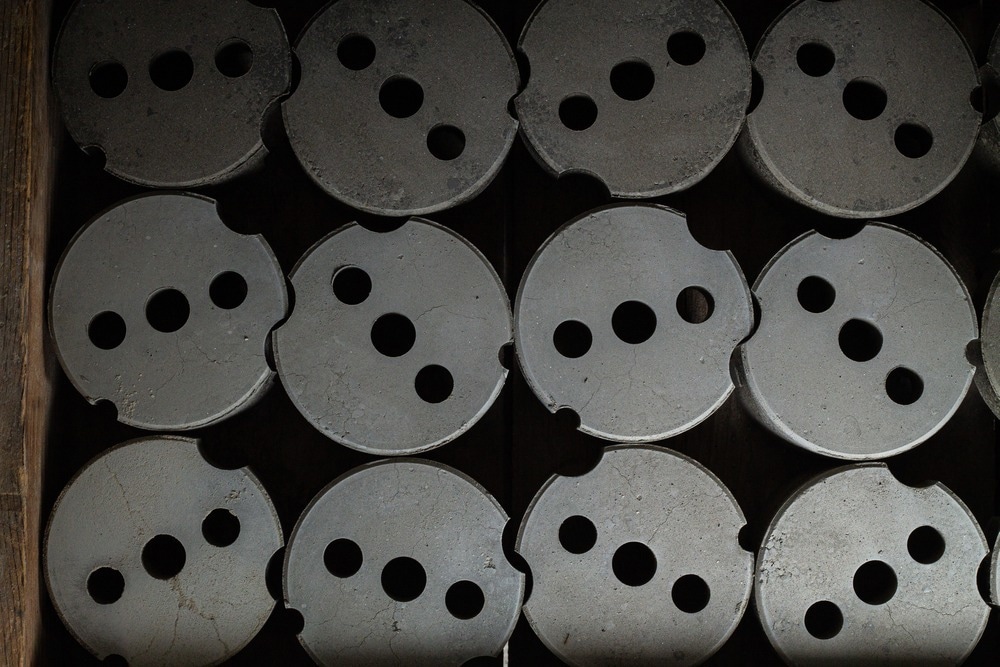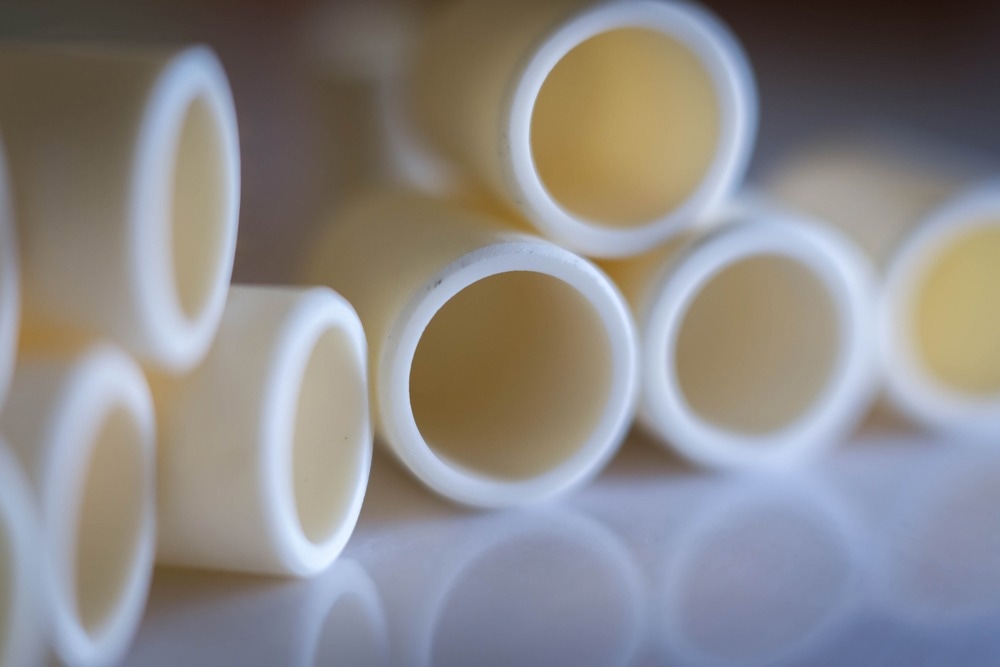Technical ceramics are ceramics with exceptional qualities, such as superior hardness, resilience to high temperatures, and low toxicity. These characteristics make them excellent for use in several sectors, such as the aviation, medical, power, and electronics industries. In recent decades, the need for technical ceramics has increased significantly, and this trend is anticipated to increase in the future.

Image Credit: BossCo77/Shutterstock.com
This article examines the development as well as utilization of technical ceramics in various fields with a focus on the manufacturing domain.
Microstructural Design of Technical Ceramics
A recent article published in the journal Materials focuses on the process control of technical ceramics and how this is essential to obtain the required properties. Technical ceramics—also called advanced or high-performance ceramics—impact several industries. Advanced ceramics' thick and fine-grained microstructure can improve piezoelectric conductors, industrial goods, medical devices, and electricity production technologies, as well as provide benefits in ecological and aeronautical engineering. Microstructural design and compositional/processing management can achieve these properties.
Advanced ceramics are made by heating and regulating particle size, chemical content, and form. Chemical alteration and microstructural design increase these ceramics' electrical characteristics and make them appropriate for high-temperature piezoelectric sensors. A prime example is the addition of oxide dopants such as Manganese doped d CaBi4Ti4O15, which leads to enhanced properties. Such doped technical ceramics are being studied for future extremely high-temperature applications and specifically for piezoelectric sensor equipment.
Technical Ceramics Market
In the period between 2021 and 2028, the global market for technical ceramics is expected to amass around $12,300,000,000 at a CAGR of 6.8% as per the latest report by Research Dive. The expanding use of technical ceramics in numerous sectors as a result of their outstanding features is driving market expansion. It is anticipated that the monolithic ceramics sub-segment, the medical and aerospace sector, the electronics & semiconductors sub-segment, and the oxide sub-segment will dominate the market. During the projected period, the Asia-Pacific market is anticipated to lead the pack.
Technical Ceramics in the Future of Aerospace
One of the most significant consumers of technical ceramics is the aerospace industry, and it is anticipated that this sector's need for these materials will only increase in the coming years. It is anticipated that technical ceramics will play a significant part in the future development of aviation engines that are both more fuel efficient and lighter in weight. Because of their exceptional resistance to high temperatures and their exceptional longevity, technical ceramics are well suited for use in engine components such as combustion chambers and superchargers, which are placed in settings that are both exceptionally hot and subjected to exceptionally high stresses requiring superior material strength and durability.
Additionally, it is anticipated that the growing need for electric and hybrid aircraft will fuel the demand for advanced ceramics in the aerospace sector. As the market for electric airplanes continues to expand, there will be a greater need for a battery and other avionics components that contain advanced ceramics. Additionally, the advancement of novel materials for the industrial production of lightweight and more cost-effective elements, such as ceramic matrix composites, is predicted to boost the requirement for technical ceramics in the aerospace industry. This growth in demand is expected to take place over the next several years.
The Future of the Electronics Manufacturing
Another big consumer of technical ceramics is the electronics sector, and it is anticipated that demand for these materials will only increase in the years to come. In technological applications, such as capacitors, piezoelectric devices, and high-temperature substrates, technical ceramics are an excellent material choice because of their tolerance to high temperatures and their ability to insulate against electrical current.

Image Credit: WildSnap/Shutterstock.com
The need for technical ceramics in the electronics sector is anticipated to rise in the future as a result of the development of electronic gadgets that are both more effective and more long-lasting. Some examples of these products are embedded systems and wearable technology. In addition, the development of sophisticated materials for the production of more cost-effective electronic parts, such as ceramics made of aluminum nitride, is anticipated to provide a major boost to the ceramics industry.
Technical Ceramics for Future Energy Systems
The energy industry is another important consumer of technical ceramics, and it is anticipated that the demand for these materials will continue to rise in the foreseeable future. Because of their resilience to high temperatures and their durability in chemical environments, technical ceramics are ideally suited for use in applications relating to energy, such as catalysts, fuel cells, and solar panels.
It is anticipated that there will be a rise in demand for technical ceramics for the fabrication of solid oxide fuel cells and molten salt reactors. Additionally, the development of improved materials for the construction of solar panels that are more efficient, such as silicon carbide ceramics, is likely to enhance the need for technical ceramics in the energy sector.
An article in Chemical Engineering Journal presented an innovative strategy to enhance energy storage of ferroelectric technical ceramics. Transparent ferroelectric ceramics devoid of lead with outstanding energy storage capabilities are particularly wanted for intermittent energy technologies and the growing need for optical transparency. Transparency and power storage efficiency of lead-free bulk ceramics do not, however, match the criteria of their numerous uses. An approach for optimizing the power storage qualities and transparencies of ceramics by adding Nano-domains, boosting the energy band gap, and decreasing the grain size was presented. A superb near-infrared (1378 nm) transparency of up to 84.5%, a high energy density (W) of -4.42 Jcm-3, and an exceedingly tiny strain of 0.022% were attained. These results demonstrated the potential uses of (K0.5Na0.5) NbO3-based ceramics for energy storage and propose a practical method for developing novel lead-free energy storage transparent materials via domain engineering.
Technical Ceramics: Pioneer of Future Biomedical Manufacturing
Biocompatibility is one of the primary benefits of employing technical ceramics in medical equipment. Ceramics do not generate an immunological reaction or corrosion in the human body, unlike metals. This makes them an ideal material for long-term implantable devices, such as prosthetic joints and heart valves. Ceramics can be disinfected without compromising their quality, making them an excellent choice for reusable medical equipment.
Due to its great biocompatibility and mechanical robustness, there is an increasing interest in using ceramics in orthopedic implants. In addition, the development of novel manufacturing technologies, such as additive manufacturing, enables the production of ceramic medical implants with better qualities that are both complicated and of high quality.
The fabrication of new diagnostic instruments in the future is heavily reliant on technical ceramics. For instance, technical ceramics are being studied to create new imaging systems with enhanced precision and resolution, such as ultrasound and CT scanners. The manufacturing of novel biosensors that may detect illnesses and other medical disorders in their earliest stages is also expected to provide a major boost to the industry.
Finally, it is anticipated that the application of technical ceramics in medical devices will spread into other fields, including regenerative medicine and tissue engineering. Ceramics are extensively researched to aid in the fabrication of novel scaffold substances for tissue engineering that can assist the formation of new tissue and enhance healing, for instance.
In conclusion, it is anticipated that technical ceramics will play a pivotal role in the creation of more efficient and durable materials for a variety of sectors.
More from AZoM: Women in STEM: In Conversation with Dr. Katharina Marquardt
References and Further Reading
Research Dive, 2022. Global Technical Ceramics Market in the 2021–2028 Timeframe [240-pages] | Report by Research Dive. [Online]
Available at: https://www.globenewswire.com/en/news-release/2022/10/03/2526952/0/en/Global-Technical-Ceramics-Market-Anticipated-to-Garner-12-300-1-Million-Growing-with-6-8-CAGR-in-the-2021-2028-Timeframe-240-pages-Report-by-Research-Dive.html#:~:text=New%20York%2C%20U
Shrivashtava, G. R., 2022. Recent Developments in Advanced Ceramics Market Industry. [Online]
Available at: https://www.linkedin.com/pulse/recent-developments-advanced-ceramics-market-industry-gr-shrivashtava/?trk=articles_directory
Dai, Z. et. al. (2022). A strategy for high performance of energy storage and transparency in KNN-based ferroelectric ceramics. Chemical Engineering Journal. 427. 131959. Available at: https://doi.org/10.1016/j.cej.2021.131959
Chen, Y., & Wang, Q. (2023). Microstructural Design and Processing Control of Advanced Ceramics. Materials, 16(3), 905. Available at: https://doi.org/10.3390/ma16030905
Disclaimer: The views expressed here are those of the author expressed in their private capacity and do not necessarily represent the views of AZoM.com Limited T/A AZoNetwork the owner and operator of this website. This disclaimer forms part of the Terms and conditions of use of this website.